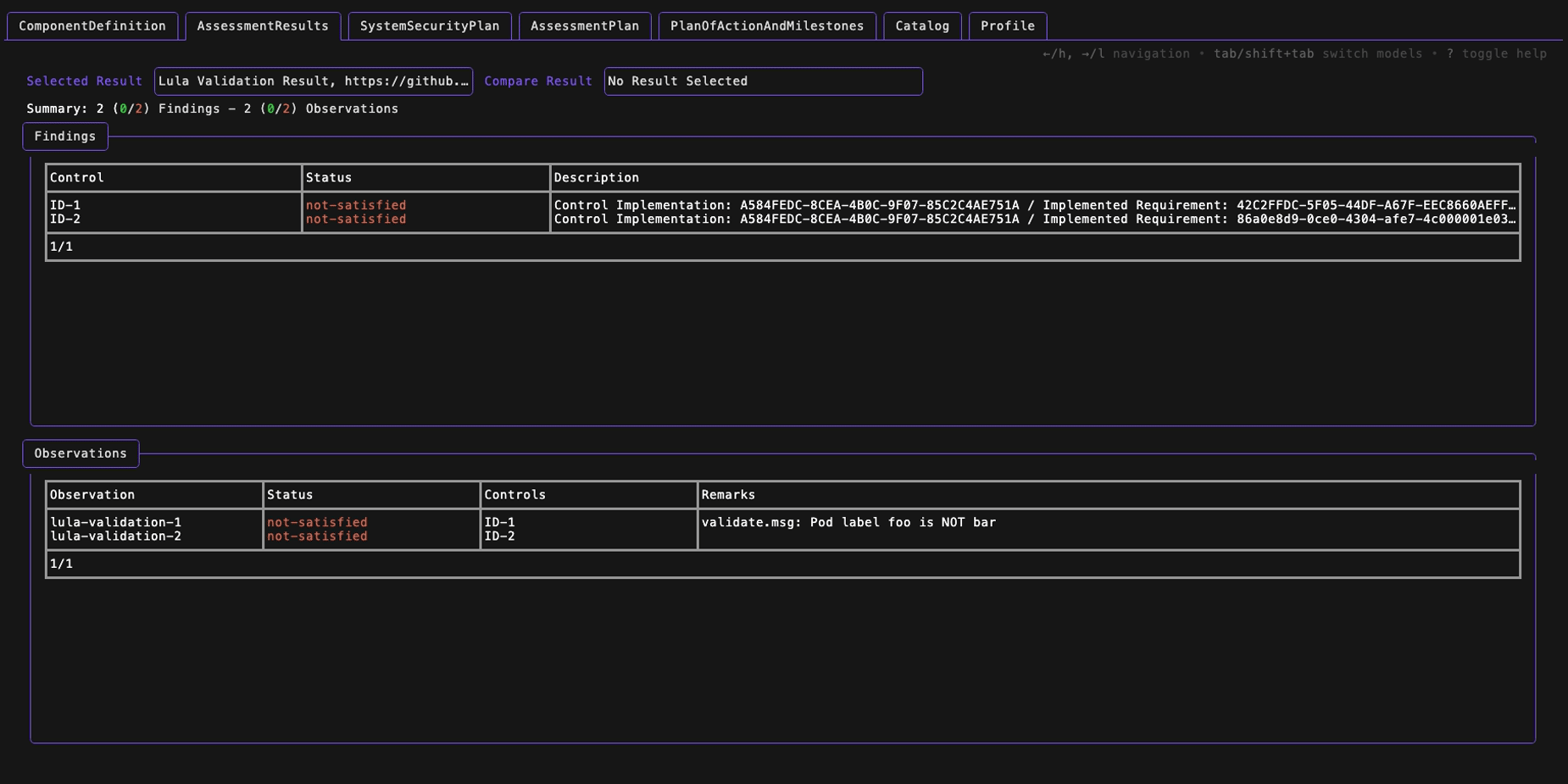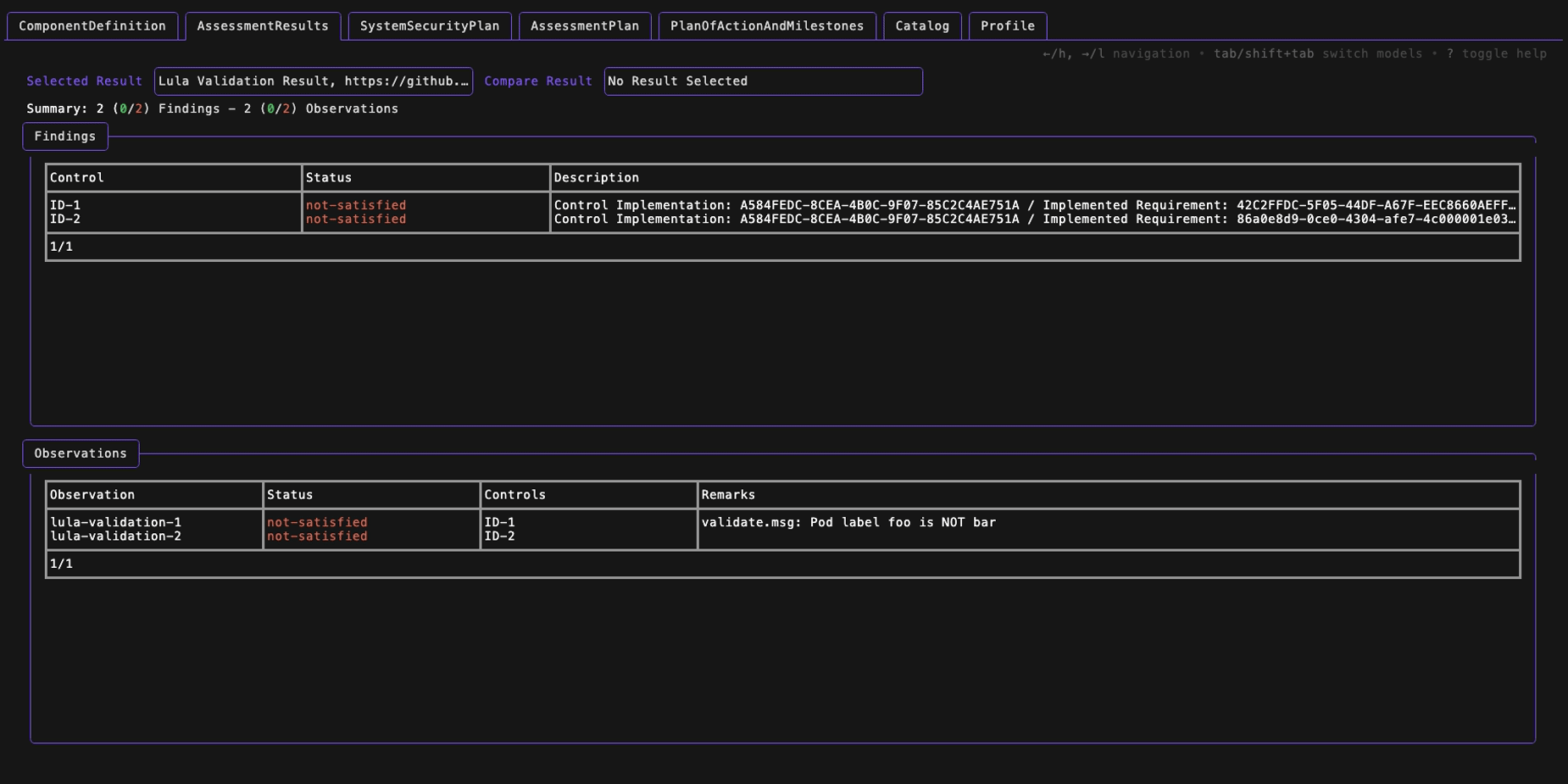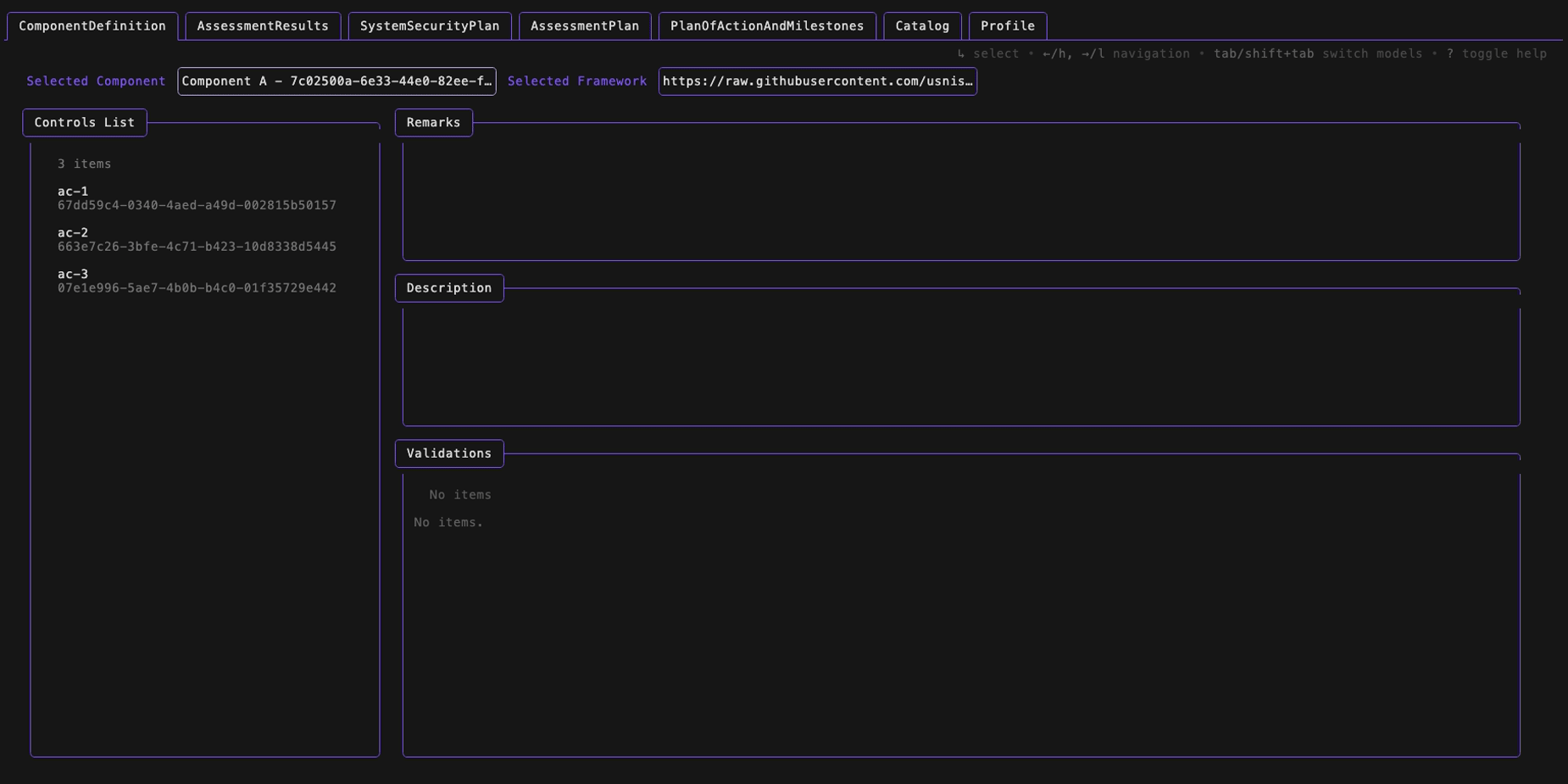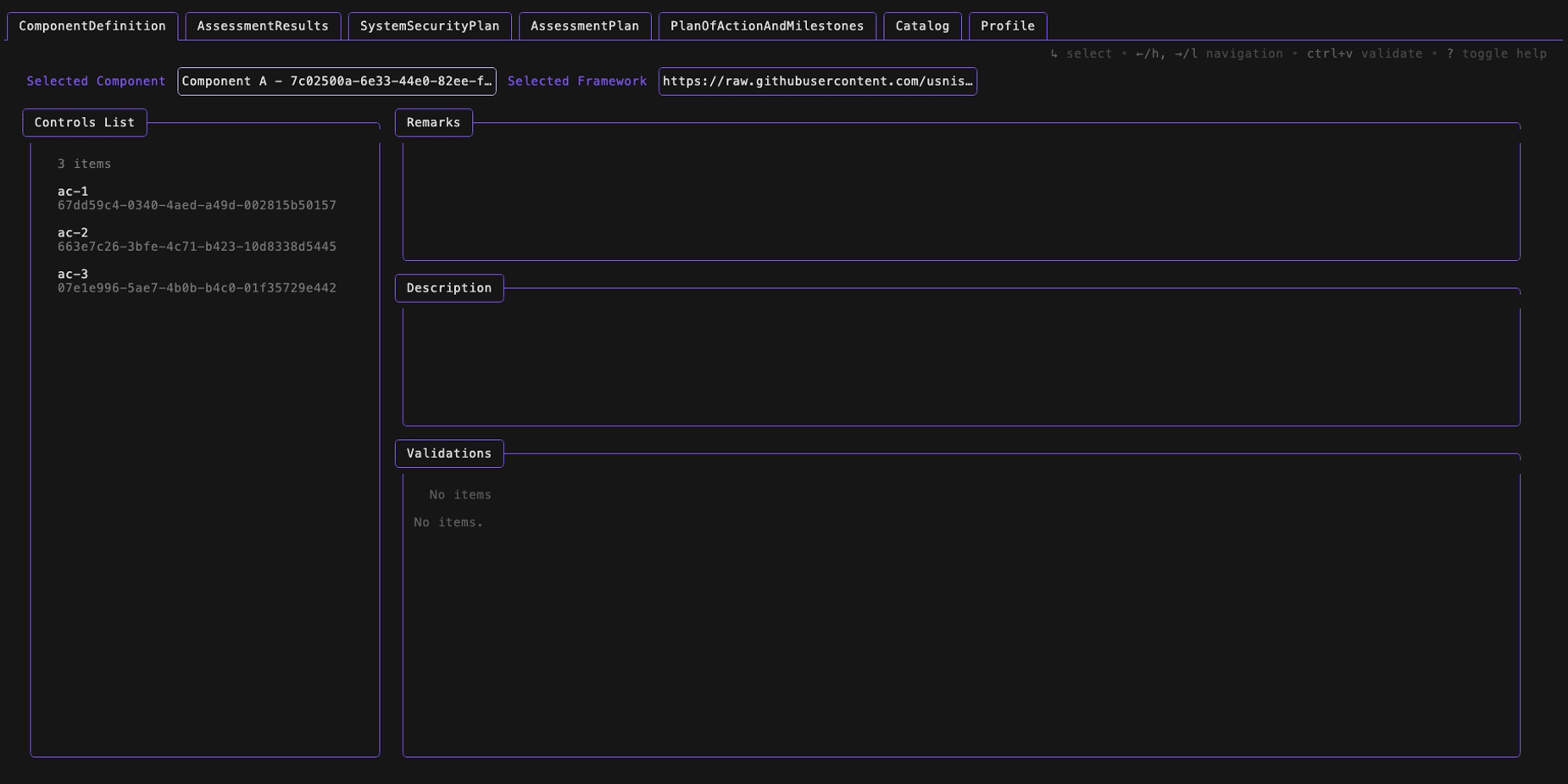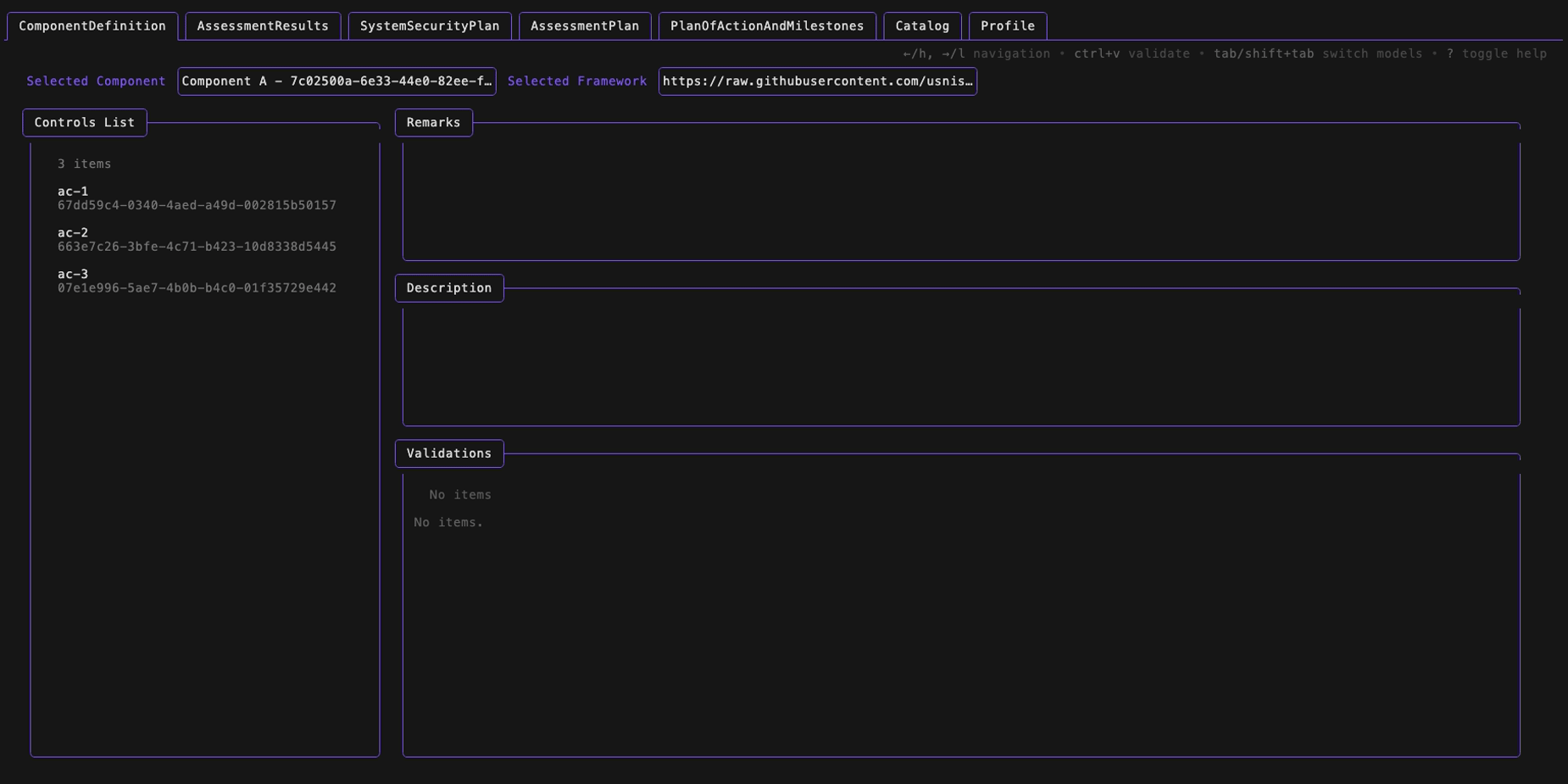The Lula Console is a text-based terminal user interface that allows users to interact with the OSCAL documents in a more intuitive and visual way.
Currently, only the Component Definition and Assessment Results models are supported in the Console.
- See the sub-pages for more information on interacting with each specific OSCAL model in the Console.
[!NOTE] The Console is currently in development and views are subject to change.
Usage
To open the Console with particular OSCAL models:
lula console -f /path/to/oscal-component.yaml,/path/to/oscal-component-2.yaml,/path/to/assessment-results.yaml
The -f (or --input-files) flag can be used to specify multiple OSCAL model file paths to be loaded into the Console.
Writing to Output
Component Definition
The Console supports writing updated remarks and description fields to the component-definition model.
To include an output file to save any changes made to the component definition, use the --component-output or -cflag:
lula console -f /path/to/oscal-component.yaml -c /path/to/output.yaml
If no output file is specified and a single component definition is passed, the provided component definition will be overwritten. If multiple component definitions are passed and no output file is specified, the Console will default to component.yaml in the current working directory.
Assessment Results
The Console supports writing assessment results that are generated from the Component Definition validate execution.
To specify an output file to write assessment results, include --assessment-output or -a. If you provide no -a, but include a single assessment results file as inputs (via --input-files/-f), that will be used as the output file. If no assessment results file is provided (or multiple are provided), the Console will default to assessment-results.yaml in the current working directory.
Example of running console including the optionality to write assessment results to the provided file:
lula console -f /path/to/oscal-component.yaml -a /path/to/output.yaml
Keys
The Console responds to the following keys for navigation and interaction (each sub-model has additional key response, see respective help views for more information):
| Key | Description |
|---|---|
? | Toggle help |
ctrl+c | Quit |
tab | Tab right between models |
shift+tab | Tab left between models |
